
Councilmembers Eunisses Hernandez and Hugo Soto-Martinez held a press conference inside City hall to announce the Central American Cultural District. Photo cutesy of Jonathan Romero.
On the last day of National Hispanic Heritage Month, council members Eunisses Hernandez (Council District 1) and Hugo Soto-Martinez (Council District 13) introduced legislation for the establishment and formal creation of a Central American Cultural District in the City of Los Angeles.
On Tuesday, both council members expressed how proud they were of bringing this motion forward. “The Central American community is an irreplaceable part of the fabric of Los Angeles,” Hernandez said. “I am honored to stand alongside this coalition of community leaders and I thank them for their tireless advocacy and service.”
Soto-Martinez said the project would also be an important cultural investment. “The Central American community is an integral part of the culture and history of Los Angeles,” he said. “Establishing this new Central American Cultural District would be an important investment in that community by the city, as well as an acknowledgment of the tremendous contributions that community has made to our city and shared home.”
The Central American Cultural District project is expected to take four to five years to be completed and will use both public and private funding sources.
The motion, announced on Tuesday in a press conference inside City Hall, instructs various city offices, such as the Bureau of Street Services, Bureau of Engineering, and Department of Cultural Affairs, to develop a report that includes recommendations on things such as the scope of work, cost estimates, assistance with procurement, schedules, installation, and completion of the project. The different county offices are expected to release the report and recommendations in approximately six months.
The establishment of the Central American Cultural District looks to honor and formally acknowledge the contributions of the Central American community living and residing in L.A.
“The civil wars of the Central American region in the 1970s and 1980s forced the migration of millions of people. The Central American people fleeing for their lives and in search of better life opportunities had a global reach in their diaspora but the primary destination for relocation was the United States,” the motion stated. “Los Angeles became home to the largest Central American population and, over the past 45 years, this community has become deeply woven into the city's cultural and economic fabric.”
There are nearly one million Central Americans in L.A. County, approximately 600,000 of whom are city limits, according to the 2020 U.S. Census. Loyola Marymount University has also stated that the largest Central American immigrant communities in L.A. County are from El Salvador and Guatemala. The two groups combined make up 98.4% of all Central Americans in L.A.
The motion also referenced a 2012 report titled “Central American Cultural District Master Plan,” which, according to the motion, was developed through feedback from community members and Central American coalitions representing the Westlake-Pico Union area. “Over a decade later, the outcomes of this report are being brought to fruition by Central American community leaders... Due to the community’s outsized contribution to our economy and social and cultural fabric, the Central American community should be recognized through the naming of a culturally designated area,” the motion states.

Attendees part of the Central American community in L.A. also joined the press conference. Photo courtesy of Jonathan Romero
The proposed Central American Cultural District will be primarily located in CD-1, which encompasses neighborhoods such as Highland Park, Chinatown, Echo Park, Elysian Park, Angelino Heights, Lincoln Heights, and Koreatown.
CD-1 is also home to MacArthur Park and Pico-Union, communities where a large population of Central Americans live and work today and places that house cultural spaces such as El Salvador Corridor, located at the intersection of Pico Boulevard and Vermont Avenue.
"The introduction of the Central American Cultural District marks a significant milestone for our community, recognizing decades of cultural, social, and economic contributions that have shaped [the] Los Angeles mosaic, particularly in Pico-Union and Westlake," said Carlos Vaquerano, president and chief executive officer of la Clínica Romero, a primary health care clinic whose majority of its patients are Salvadorian. “This district will stand as a living tribute to the memories and history we’ve built here.”
Apart from Clínica Romero, other coalition leaders from L.A.’s largest Central American community organizations were also present at Tuesday’s press conference, including Salvador Sanabria, executive director of El Rescate, who provides legal and immigration representation and helps people seeking asylum.
CARECEN-LA, the largest Central American organization in the country, providing low-cost immigration legal services in the country, was also present on Tuesday, as was the Salvadoran American Leadership and Educational Fund (SALEF).
Jocelyn Duarte, executive director of SALEF, talked about the importance that the cultural district can have on the younger generation living in L.A. and advocating for a better future. “The Central American Cultural District will be a hub where the next generation of Central American leaders can learn, grow, and lead the fight for justice and equity—not just for Central Americans but for all marginalized communities,” she said.
To read the full motion and learn more about the Central American Cultural District, click here.

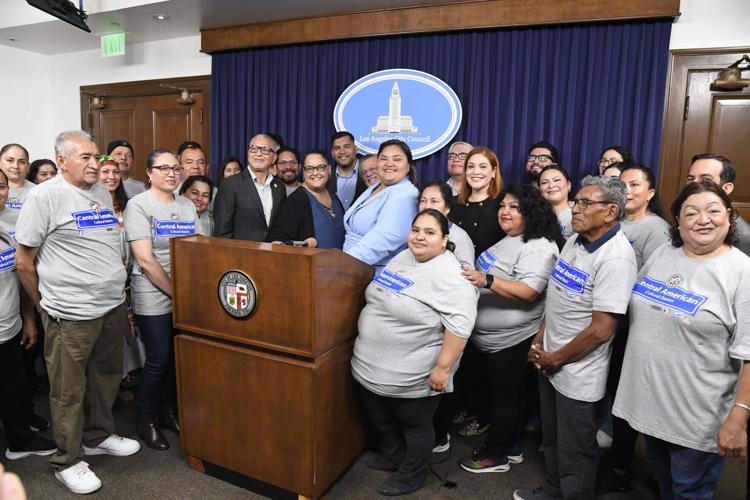
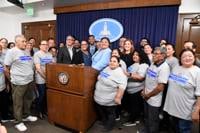

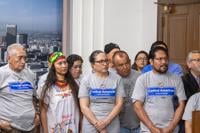



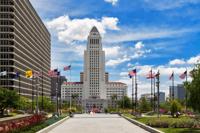

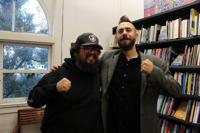


(0) comments
Welcome to the discussion.
Log In
Keep it Clean. Please avoid obscene, vulgar, lewd, racist or sexually-oriented language.
PLEASE TURN OFF YOUR CAPS LOCK.
Don't Threaten. Threats of harming another person will not be tolerated.
Be Truthful. Don't knowingly lie about anyone or anything.
Be Nice. No racism, sexism or any sort of -ism that is degrading to another person.
Be Proactive. Use the 'Report' link on each comment to let us know of abusive posts.
Share with Us. We'd love to hear eyewitness accounts, the history behind an article.